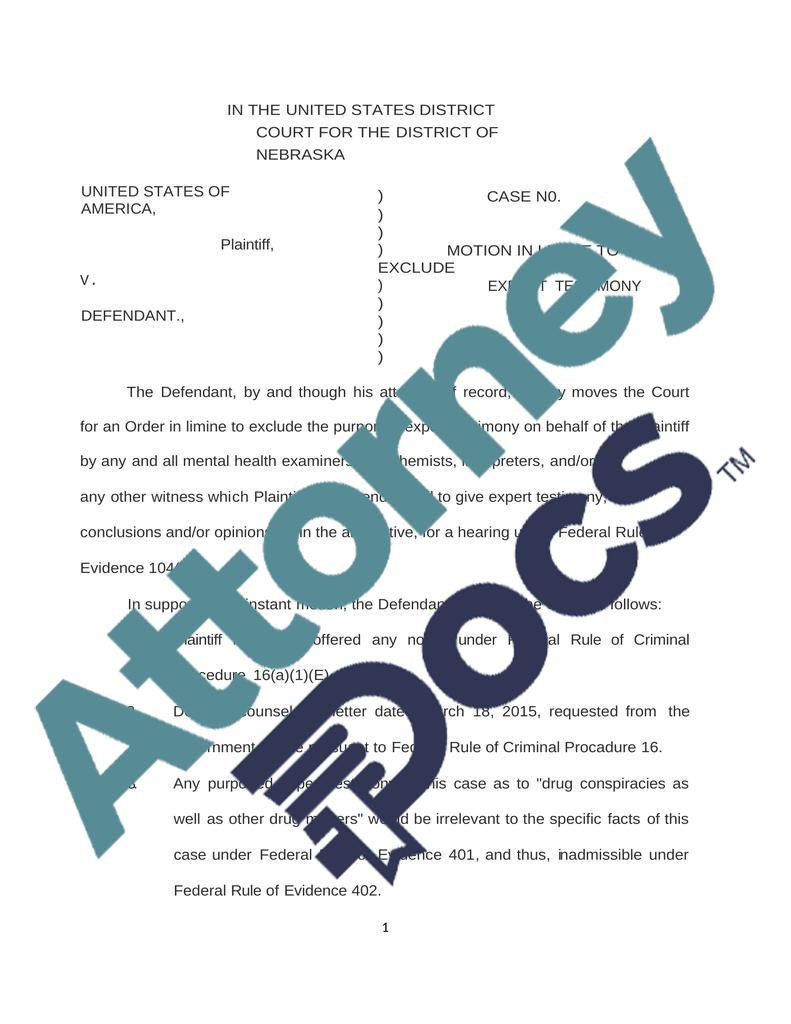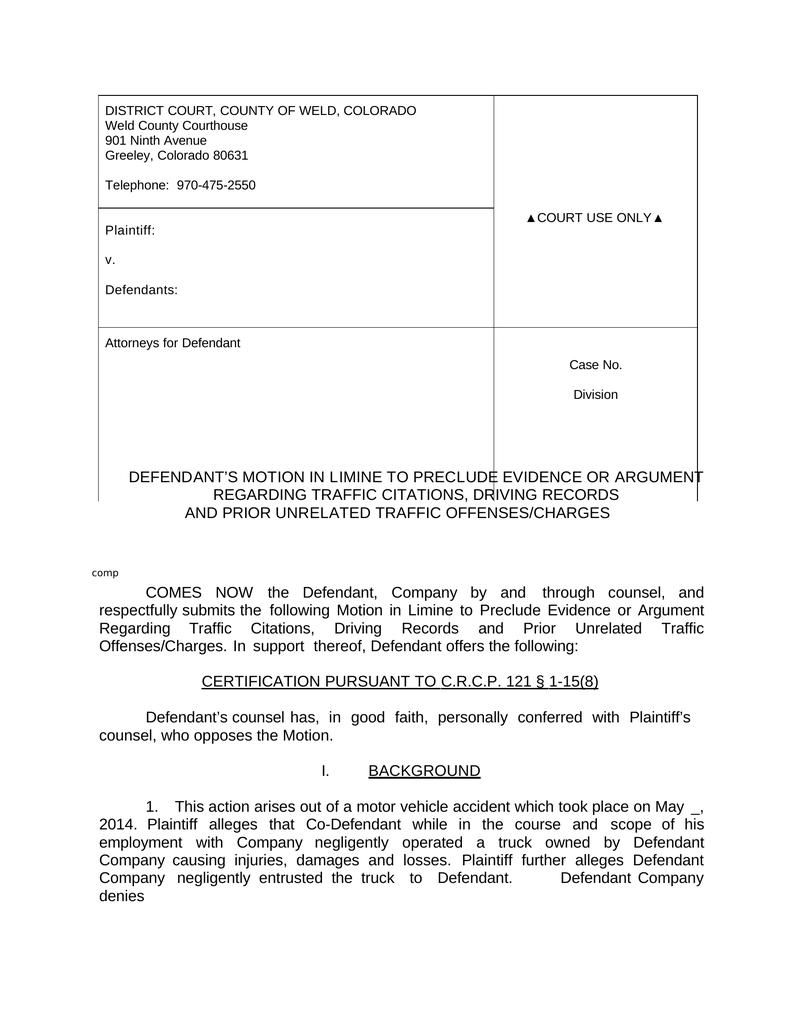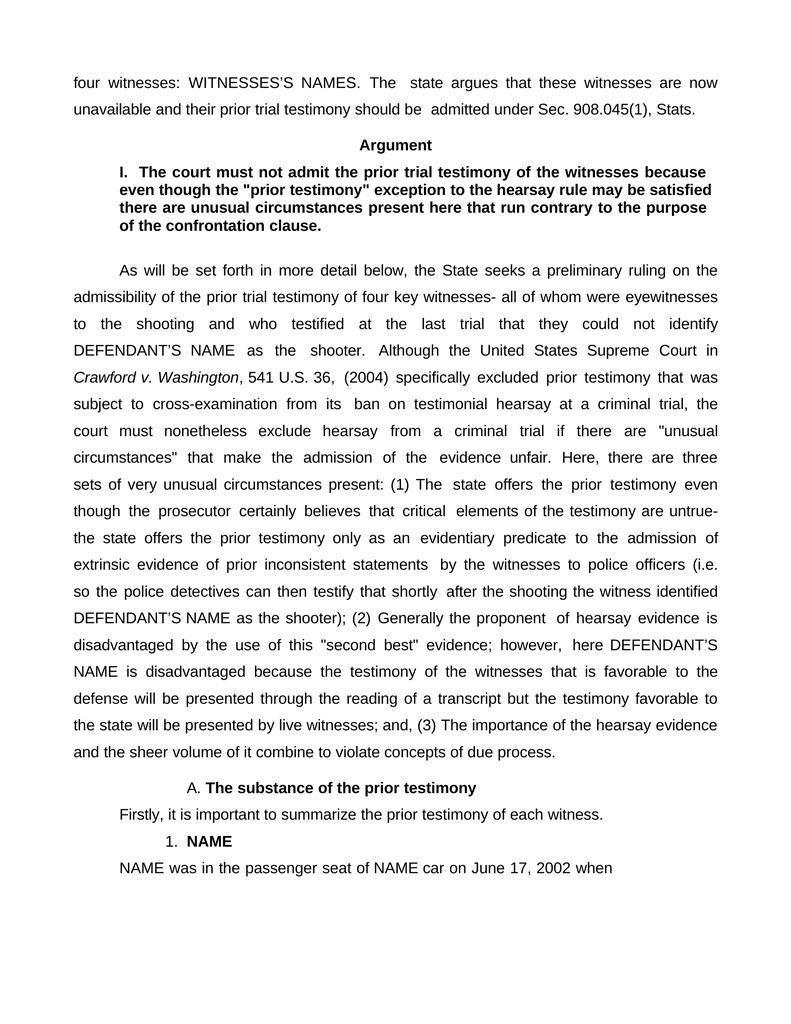

The Michigan Supreme Court has held that for evidence to be excluded as prejudicial, a party opposing the evidence must show something more than mere damage to its case. “Relevant evidence” means evidence having any tendency to make the existence of any fact that is of consequence to the determination of the action more probable or less probable than it would be without the evidence.Īlthough relevant, evidence may be excluded if its probative value is substantially outweighed by the danger of unfair prejudice, confusion of the issues, or misleading the jury, or by considerations of undue delay, waste of time, or needless presentation of cumulative evidence. The most common use of the in limine motion is to exclude irrelevant and/or prejudicial evidence.
#MOTION IN LIMINE TO EXCLUDE WITNESS TESTIMONY TRIAL#
Thus, a pretrial in limine ruling avoids disruption of the trial from needless objections, and avoids the jury being excused for offers of proof. The jury may view counsel who make repeated objections, or who seek to excuse it, as attempting to hide information. Another purpose of the motion may be to aid the credibility of counsel. Motions in limine can also be effectively used to educate the court about the case, and hopefully cause it to question a key aspect about an opponent’s case.

Examples of such motions in limine are those which seek to preclude an opponent from introducing speculative damages or an expert from testifying about unsubstantiated topics. Often, motions in limine may also be dispositive in nature by seeking to exclude evidence necessary to prove a key aspect of an opponent’s case. Generally, a motion in limine is used to exclude evidence that a party believes to be irrelevant or unfairly prejudicial. See Lapasinskas, supra, and 63 ALR 3d 311.

The purpose of a motion in limine is to determine whether certain evidence may be presented to the jury, in any form and at any stage. In complex commercial litigation, courts, especially federal, encourage the filing of in limine motions to resolve admissibility issues before trial. In jury cases, proceedings shall be conducted, to the extent practicable, so as to prevent inadmissible evidence from being suggested to the jury by any means, such as making statements or offers of proof or asking questions in the hearing of the jury. In making its determination it is not bound by the Rules of Evidence except those with respect to privileges. Preliminary questions concerning the qualification of a person to be a witness, the existence of a privilege, or the admissibility of evidence shall be determined by the court, subject to the provisions of subdivision (b). (a) Questions of Admissibility Generally. MRE 104(a) and 103(c) support bringing motions in limine. Motions in limine are not found in Michigan statutes or the Michigan Court Rules, but are a creation of common law. A motion in limine DefinedĪ motion, heard in advance of jury selection, which asks the court to instruct the defendant (or plaintiff), its counsel and witnesses not to mention certain facts unless and until permission of the court is first obtained outside the presence and hearing of the jury. Motions in limine can also be used to gain important strategic advantages during pretrial and trial by limiting an opponent’s proofs, or precluding an entire theory of his or her case. Motions in limine are commonly used in trial preparation in order to narrow the issues for trial and further guide testimony and presentation of evidence, as well as possibly reduce a client’s costs associated with trial.


 0 kommentar(er)
0 kommentar(er)
